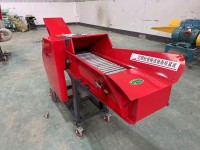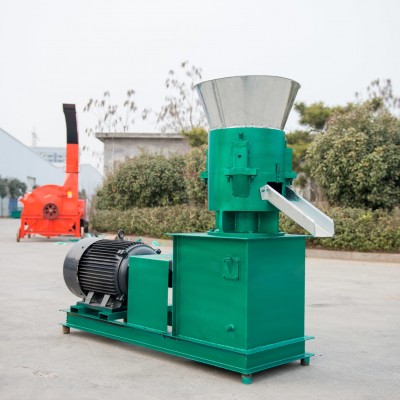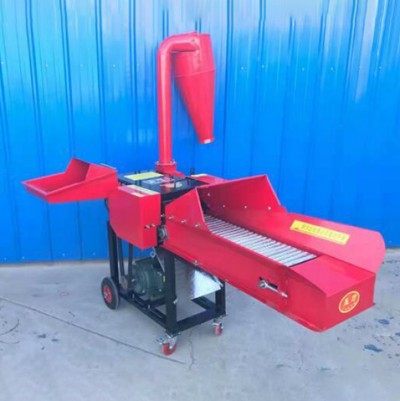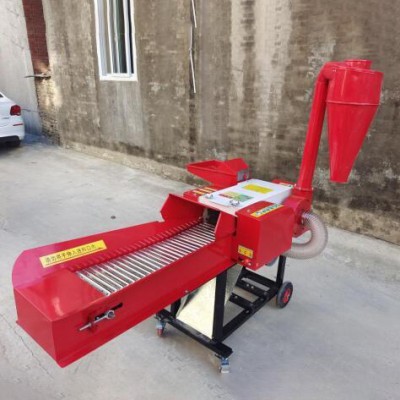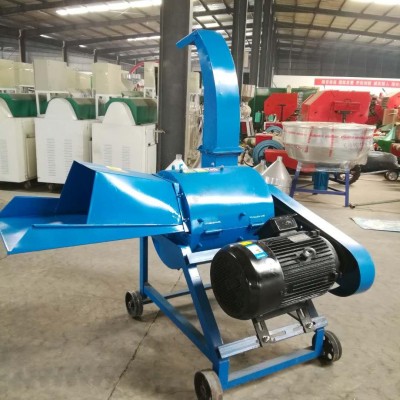
The tightness of the belt of the hay cutter has an important impact on the operation of the equipment.
When the belt is too loose:
• Reduced power transmission efficiency: When the belt is too loose, the friction between the belt and the pulley decreases. During the power transmission process, slipping is likely to occur. For example, the power of the motor cannot be effectively transmitted to working components such as the cutter shaft, resulting in a decrease in the cutting speed of the hay cutter and affecting work efficiency.
• Accelerated belt wear: Belt slipping will cause relative sliding friction between the belt and the pulley. This friction mode causes more serious wear to the belt than normal static friction. Moreover, when the belt is too loose, it will constantly vibrate during operation, making the edge parts of the belt more prone to wear and shortening the service life of the belt.
• Impact on cutting quality: Due to unstable power transmission, the rotational speed of the cutter shaft is uneven, which will lead to uneven lengths and thicknesses of the cut forage. For some hay cutting operations with high requirements for cutting precision, such as making silage, this situation will seriously affect the quality of the feed.
When the belt is too tight:
• Increased bearing load: An overly tight belt will exert greater pressure on the bearings of the pulley. Because the tension of the belt is too large, the bearings need to bear additional radial forces during operation, which will cause the bearings to heat up, increase wear, and may even damage the bearings.
• Shortened service life of the belt and machine components: Excessive tension will cause the fiber structure inside the belt to be overly stretched, easily leading to cracks and breaks in the belt. Meanwhile, since the force transmitted by the overly tight belt to other components, such as the motor shaft and the cutter shaft, also increases, the wear of these components will also accelerate, thus shortening the service life of the entire hay cutter.
• Increased motor burden: An overly tight belt will increase the load on the motor, requiring more electrical energy to drive the belt and other components. During long-term operation, it may cause the motor to overheat and even burn out the motor.
View document


 English
English 日本
日本 한국인
한국인 Français
Français Deutsch
Deutsch español
español Italiano
Italiano Portugal
Portugal Việt Nam
Việt Nam türkiye
türkiye عرب
عرب Русский
Русский čeština
čeština แบบไทย
แบบไทย Eesti
Eesti Gaeilge
Gaeilge Hmoob
Hmoob íslenskur
íslenskur Cymraeg
Cymraeg български
български اردو
اردو Polski
Polski Hrvatski
Hrvatski українська
українська bosanski
bosanski فارسی
فارسی lietuvių
lietuvių latviski
latviski עִברִית
עִברִית Română
Română Ελληνικά
Ελληνικά dansk
dansk Magyar
Magyar norsk
norsk Suomalainen
Suomalainen Nederlands
Nederlands svenska
svenska slovenský
slovenský Slovenščina
Slovenščina हिंदी
हिंदी Indonesia
Indonesia Melayu
Melayu Malti
Malti Kreyòl ayisyen
Kreyòl ayisyen català
català বাংলা
বাংলা Српски
Српски o'zbek
o'zbek


